Select Your Country
Selecting a different country will redirect you to that homepage.
United Kingdom
Prosci Europe instructors share common changes, challenges and success stories from the training room
Prosci’s 2019 research shows that often we underestimate the support needed to address resistance. Planning for and anticipating resistance early on is a key tactic in helping to mitigate resistance throughout a change project.
It is not uncommon for participants to pre-empt the topic of resistance during Prosci’s Change Management training. I recently worked alongside a project team where the mere thought of this subject provoked internal resistance to managing it. In the ideal scenario that we have anticipated and identified where we may be facing resistance, Prosci outline a number of key tactics to overcome it.
The tactics to overcome resistance vary based on reasoning. An overwhelming, yet unsurprising 80 percent of participants in Prosci’s 11th edition research reported that the most significant resistance to a change arose during implementation. When looking at managing resistance it is important to remember that resistance is a very natural response to change and the goal is to mitigate, not eliminate. Prosci defines active resistance as a person or group whose activities oppose or prevent the change from happening. The following can be used as a check-list when recognising Prosci’s greatest contributors to help overcome active resistance:
1. Engaging executive sponsorship.
Above all else, participants reported that having actively engaged sponsors in resistance management had the greatest impact when decreasing overall resistance to a change initiative. There are numerous examples of engagement activities our leaders can fulfil to ensure this criteria is met:
2.Communicating proactively.
Communication is at the heart of everything within Prosci’s research. Change management always looks to put people first. With this in mind, proactive communication is fundamental in overcoming resistance. If our people feel informed and up to date, they are more likely to get on board. When looking at communication as a form of resistance management, it is important to stress that this should not just be bulk emails. Prosci outline the significance of having frequent 1:1 sessions with resistors (Preferably face to face) where their concerns can be aired and understood. Active feedback loops are essential in providing a space for people to share their thoughts during the change process. Finally, communication should be constant and consistent with a top-down approach.
3. Identifying and confronting directly
Where we are having that proactive communication, this idea focuses on identifying and understanding the actions and activities of the resistors. It is only once we understand why they are resisting, that we can focus on an action plan to mitigate. In essence, we have to ‘name it to tame it’.
4. Equipping and enabling managers and supervisors to address resistance.
As part of Prosci’s CLARC roles for supervisors they are described as being our ‘resistance managers’. As Change Managers, it is our job to ensure that they are prepared and equipped with the skills and resources to fulfil this role. In practise, this would involve our people managers leading ADKAR Assessments on employees to gauge barrier points that may be causing resistance As well as having defined talking points during 1:1’s and leading FAQ sessions to support understanding.
5. Involving resistors in the project or solutions design.
Giving people a sense of ownership in the change initiative will allow resistors to feel more intrinsically motivated. If everyone is responsible for the project outcomes, they will be more inclined to support solutions. This idea looks at the differences between compliance versus contribution. Contribution is essential in making people feel heard and part of a community.
During change initiatives, resistance materialises in numerous ways. Sometimes it may not be so obvious. Respondents in Prosci’s research reported on the common types of resistance they encountered, with 81 percent saying they found resistors to be ‘disengaged’. Prosci describes passive resistance as a person or group not engaging in any programs or activities that support the change. Similarly to when we are looking at overcoming active resistance, transparent, open and honest communication is essential. For passive resistance there is a strong focus on outlining WIIFM. There needs to be clarity on the why, who and how of the change. Secondary to this, Prosci outline the importance of having a positive peer influence. This may be a change agent network or change champion group that will help to drive momentum to mitigate passivity. Where there is this passive response, motivation and momentum are truly key factors that can be raised by inviting participation in the solution. The idea of co-creation and ownership of the solution will allow employees to feel listened to. Again, fundamental to all of this is the enlistment of senior support, who will ideally be active and visible throughout, leading by example with a demonstration of buy-in.
Prosci’s 2019 research shows that often we underestimate the support needed to address resistance. Participants have shown that 51 percent of those that made plans to address resistance met, exceeded or greatly exceeded objectives (Versus 20 percent that did not plan for resistance). Planning for and anticipating resistance early on is a key tactic in helping to mitigate resistance throughout a change project.
In a brief recap, what can you do differently next time when overcoming resistance? Here are some ideas:
How can I learn more?
Become equipped to manage and guide change in your organisation. Take the next step and become a Prosci certified change practitioner! Find out more.
We can also organise training, privately for your organisation. If you're interested in empowering your teams to lead your organisation through change, get in touch!
Stay up-to-date on our latest blogs, upcoming webinars and cutting-edge research.
You may unsubscribe from our emails at any time. See our privacy policy for more information.
